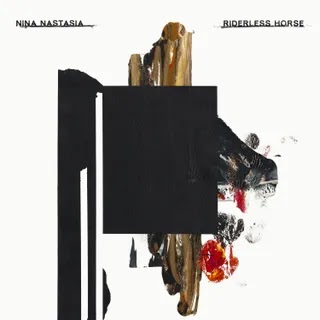After a 12-year absence, the singer-songwriter returns with a raw, unadorned celebration of survival.
Note: This review includes details of suicide and abuse.
Nina Nastasia’s cryptic lyrics used to read like horrible mysteries she warned against solving, protecting the listener by sparing the details. “We never talked about the thing we witnessed,” she sang on the opening lines of 2003’s Run to Ruin, honoring that silence by lasting the entire album without elaborating. Where other songwriters’ power came from specifics, Nastasia drew hers from obfuscation.
On Riderless Horse, her first album after a 12-year absence, she’s no longer disguising the traumas she’s writing about. As she now discusses openly, for more than two decades she was in an abusive relationship with her late manager and creative partner Kennan Gudjonsson, which degraded to such a degree that she eventually retreated not just from music but from the world. “We didn’t want anyone to see how ugly things could get, so we increasingly isolated from our friends and family,” she wrote in a statement accompanying the album. For a time she was all but confined to the small New York City studio apartment they shared.
Gudjonsson had been there quite literally from the beginning of her career (that’s him alongside her on the cover of her 2000 debut Dogs, which he helped finance). He introduced her to producer Steve Albini, who became her go-to collaborator and one of her biggest evangelists. Gudjonsson’s fingerprints are all over her first six records, from the funeral accordion accompaniments to the haunted string accents—all his creative decisions, Nastasia says. It’s a variation of a story that’s played out with sickening frequency throughout music history: He helped her realize the greatness he saw in her. He also controlled and abused her.
In January 2020, Nastasia left him. The next day he died by suicide. That’s more grief and trauma than one album could ever process, so Riderless Horse doesn’t try to be the definitive account. Instead, over its unadorned 34 minutes, it simply documents why she had to leave—and sometimes, in the process, why she stayed. In plainspoken lyrics, with only her sparse, acoustic guitar accompanying her, she captures not only their fights (although she says Gudjonsson was never physically abusive, these songs are thick with images of bruises, blood, and broken bones) but also moments of tranquility and tenderness. “I will go with you wherever/Digging holes for buried treasure/End the day with just our dirty feet,” she sings with unexpected affection on “Blind as Batsies.” She’s volunteered herself for a delicate task, memorializing the man she loved while exposing his demons.
There’s a way you expect an album born of these circumstances to play: fragile, grief-stricken, almost oppressively sad. But Riderless Horse rarely lingers on pain. More often the album is a celebration of survival, with Nastasia occasionally sounding euphoric about her new sense of freedom. “Oh, the water is fine and I feel like I’m happy for the first time,” she beams on “Lazy Road,” one of several hopeful, soft-picked folk tunes. Decades of cramped existence in New York have done nothing to curb her gift for conjuring the boundless skylines and inviting back porches of Appalachia.
The album never breaks its focus on Nastasia’s voice, which is as raw and radiant as ever. On “You Were So Mad,” it soars with defiant fury. Albini’s lovingly bare production remains, but all the embellishments of its predecessors—the nocturnal accordions, the skeletal drums, and cautionary strings—have been peeled away, as if to underscore Gudjonsson’s absence. She doesn’t need them. Riderless Horse is Nastasia’s seventh album, but in a sense it’s a debut. For all its anguish, it’s underpinned by the joyful realization that she’s finally free to record on her own terms.
If you are experiencing suicidal thoughts or know someone who is, we recommend these resources:
National Suicide Prevention Lifeline
988














%20Music%20Album%20Reviews.webp)

0 comments:
Post a Comment